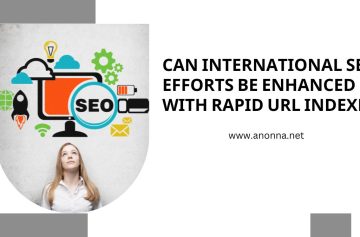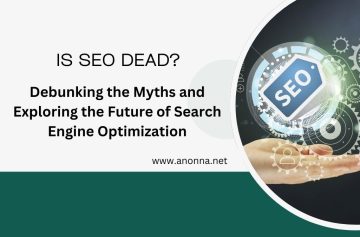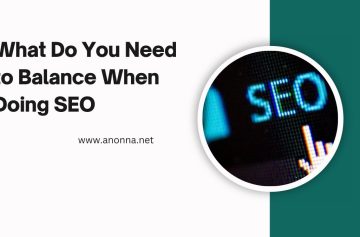
What Do You Need to Balance When Doing SEO? Key Factors for Sustainable Rankings
Want to know what do you need to balance when doing seo? Let’s see, SEO is key to boosting online visibility and driving organic traffic in today’s competitive digital space. The truth is, ranking factors are not the only component of long-term SEO success. Ranking sustainably and growing consistently requires a balanced SEO strategy.
Over-Optimizing One Aspect of SEO While Ignoring the Other
For instance, some attempt to focus on keyword optimization but skip on the quality of content, and some others pay all their attention only to technical SEO and then fail to provide an exceptional experience to their users (UX). When SEO is done in an unbalanced manner, it sometimes causes an algorithm penalty, a drop in ranking, or a decrease in organic traffic.
Key Elements to Creating a Solid SEO Strategy
There are some key elements to creating a solid and profitable SEO strategy that you need to find the balance of, such as:
- ✅ On-Page SEO vs. Off-Page SEO – Optimizing your content, but also your backlinks.
- ✅ Content Quality vs. Keyword Optimization – Plentiful keyword placement without losing readability.
- ✅ Technical SEO vs. User Experience (UX) – Making it simple for a site to be both search engine and user friendly.
- ✅ Backlinks vs Content Authority – Balance between external endorsements and internal value.
- ✅ SEO Automation vs Manual Optimization – Making use of tools yet holding a personalized strategy.
A positive SEO balance can fuel better ranking, enhanced user involvement, and sustainable success in internet searchers. In this post, you’ll find out why balance is important and how you can have an optimal yet natural SEO strategy. 🚀
The Balance in SEO: The Zen of SEO
How Striking a Balance Between All the SEO Factors Is Important for Sustaining Long-Term Success
Ranking of websites is based upon hundreds of factors because SEO is a multi-dimensional process. Although it might be attractive to run with one and only one thing like keyword optimization or backlinks generation, over-optimizing or ignoring any SEO parameters can make way more harm than good.
We Are Not Talking About a Single Ranking Factor — Google Is Multidimensional
If there’s one thing that hampers the growth of an SEO newbie, it’s overattaching themselves to a single ranking factor, believing they just have to get this one thing right in order to rank high on Google. But Google’s algorithm weighs multiple factors, such as:
- ✔ Content Quality – Is the content useful, worthwhile, and engaging to users?
- ✔ Keyword Optimization – Are keywords used effectively and naturally?
- ✔ Technical SEO – Does the website load quickly, is it mobile-friendly, and can it be crawled?
- ✔ User Experience (UX) – Is the website easy to navigate and visually appealing to visitors?
- ✔ Backlinks & Off-Page Authority – Does it have strong, high-quality backlinks?
A good SEO strategy considers all these aspects, so no key aspect falls through the cracks.
The Wrong Approach to Core Web Vitals Can Do More Harm Than Good
One common reason that a website might experience lower rankings is that they have focused too much on one aspect of SEO and have either over-optimized or neglected all others.
🚫 Over-Optimization Risks:
- ❌ Keyword Stuffing: Excess keyword stuffing can render content unreadable, and Google can penalize you for it.
- ❌ Building Too Many Backlinks: Google can identify unnatural backlinks, so building them excessively can lead to manual penalties.
Quick No-Nos for Anchor Text:
- ❌ Over-Optimized Anchor Text: Using identical anchor text to build backlinks can raise spam red flags.
- ❌ Focusing on Technical SEO Excessively: Technical SEO is essential, but ignoring content and user engagement can lead to declining rankings.
🚫 Neglecting SEO Elements:
- ❌ Neglecting Content Quality: Even the most technically optimized SEO website containing poorly written, thin content won’t get pages in front of the searcher.
- ❌ Non-Mobile Ready: If your website is not optimized for mobile, your rankings will drop as a result of Google’s mobile-first indexing.
- ❌ Neglecting UX and Site Navigation: Users will leave a site within seconds if they struggle to navigate it, leading to high bounce rates and lower rankings.
In general, if search engines optimize websites with the objective of delivering applicable details to users, then the exact balance of these two is what every website should have in order to be structured for SEO and attracting visitors.
Case Studies of Websites Winning or Losing on SEO Misalignments
📈 Case Study: An Effective SEO Strategy
A digital marketing blog that prioritizes high-quality content creation, keyword research, and strong backlink-building strategies, all while making sure it has a fast-loading page, is mobile-friendly, and easy to navigate. With these SEO elements balanced, the website demonstrated the following key performance indicators:
- ✅ 6 months later → 50% more organic traffic
- ✅ Lower bounce rates and higher engagement rate
- ✅ Multiple search queries ranking higher for the keywords
📉 Fail Confirmed: Backlinks Over-Optimized But Contents Are Low Quality
A microenterprise website built thousands of backlinks from low-quality directories and spam blogs, but the quality of the content and UX were overlooked. This led to:
- 🚫 Google punishing the site for unnatural linkage
- ❌ Steep decline in rankings and organic traffic
- ❌ Loss of SEO ranking and hard to recover
💡 Key Takeaway:
Balanced, holistic SEO factors (technical, on-page, off-page, and others to ensure proper UX factors) are key, and they help keep sites ranking continuously. Meanwhile, over-optimized or poorly optimized sites get penalized and drop in ranking.
Final Thought
When it comes to SEO, maximizing the value obtained from information while sticking to best practices will be the secret sauce to success. This fresh approach that is not heavily reliant on individual ranking factors will ensure search engine ranking success over time as a complete SEO strategy. 🙂
What Do You Need to Balance When Practicing SEO?
Success in SEO is not weighted toward one factor or the other, but instead is about balancing multiple, finely-tuned elements to create a strong, sustainable strategy. If one element gets over-optimized but the other is neglected, it can lead to ranking drops, penalties, or less user engagement.
In This Part, We Will Discuss Some Top Important SEO Success Components That You Should Balance for Better Growth in the Long Run
On-Page SEO vs. Off-Page SEO
SEO comprises 2 primary components: On-Page SEO & Off-Page SEO.

On-Page SEO:
This covers anything that you have direct control over on your own website, such as:
- ✔ Content Quality – High Quality, Original, and Relevant Content.
- ✔ Keyword Usage – Anxiety-free usage of relevant keywords.
- ✔ Meta Tags & Descriptions — Title tags, meta descriptions, and headers are optimized.
- ✔ URL Structure – Short and readable URLs including main keywords.
- ✔ Internal Linking – Linking related pieces of content in your web page.
Off-Page SEO:
This includes anything outside of your home page process, such as:
- ✔ Backlinks – Getting quality links from authoritative sites.
- ✔ Social Signals – User engagement from sites such as Facebook, Twitter, LinkedIn.
- ✔ Brand Authority – Increase trust by being mentioned by authority sources.
The Importance of Balancing On-Page and Off-Page SEO
It’s all about balance. On-page SEO (content, keywords) is not enough. If you don’t generate backlinks to your site, Google will not be able to discover that your site is an authority in that niche.
High bounce rates and low engagement will happen if we concentrate more on Off-Page SEO (backlinks) instead of good content.
💡 Pro Tip:
To make an SEO strategy successful, you really need to balance two things — optimized content and structure with quality backlinks and brand mentions.
The battle of the search engines: Keyword Optimization vs. Content Quality
It’s important to know that keyword accuracy and quality content. It is important to not overuse keywords and also not to underuse them.
Writing Naturally Engaging Content vs. Overstuffing Keywords
Avoid the following errors:
Keyword Stuffing:
Using the same keyword more than once unnaturally in the same post (Ex: “Best shoes for running is the best running shoes you can get because best shoes for running…”)
✅ Rely on Keywords Where Appropriate: Incorporate keywords naturally into headings, subheadings, and within the content itself.
The Google Algorithm Updates and Keyword Stuffing
Since Google updated the algorithm, websites that abuse keywords are being penalized:
Panda Update (2011):
Penalized sites with thin, low-quality content.
Hummingbird Update (2013):
Focused more on semantic search and natural language processing.
BERT Update (2019):
Enhanced Google’s comprehension of context and user intent, cracking down on keyword stuffing.
How To Optimize Keywords Without Sacrificing Content Quality
LSI (Latent Semantic Indexing) Keywords:
These are the words that are related to your main keyword that helps your content sound more natural and less repetitive.
Write for Users, Then Search Engines:
If the content is designed and written in a way to answer user queries, then automatically content will rank.
Employ Keywords Wisely:
Place them in titles, meta descriptions, and headings, as well as naturally throughout the content.
💡 Best Practice: Focus on high-value content with naturally occurring keywords rather than keyword stuffing.
Technical SEO versus User Experience (UX)
Technical SEO is all about making a site search-engine friendly, but if it harms UX, then rank drops.
Key Technical SEO Factors:
✔ Speed Optimization – Being a speed junkie, we make your website faster so that it ranks better and retains users.
✔ Mobile-Friendliness – Google is indexing sites using a mobile-first approach, which emphasizes the need for smartphone optimization.
✔ Good Site Structure & Navigation – A well-structured website helps progress in both crawling and usage.
The Pitfalls of Emphasizing Technical SEO at the Expense of UX
❌ Internal Links & Over-optimization: Too many internal links make writing unreadable.
❌ Pop-Ups (Aggressive) & Auto-Play Media: These features technically optimize the page for users but often frustrate them.
❌ Messy URL Structures: An optimized URL system can still be too complex for visitors.
Balancing SEO-Friendly and User-Friendly Design: Google’s Preference
✔ The speed for Google is not just speed — Google highlights sites that load fast and offer a flawless experience.
✔ A well-structured navigation is essential for great UX and for good SEO rankings.
✔ Websites that please users and search engines tend to appear higher in search results.
💡 Best Practice: The best option is to make sure your site is technically corrected, but at the same time, it needs to be easy to use and engaging.
Authority of Content vs Backlinks
It’s important to remember that backlinks and content authority should go hand in hand—but it can be a double-edged sword to overly rely on backlinks (without having quality content to back it up).
Quality Backlink — You Are Not a Haystack in a Haystack
✔ Backlinks tell Google your content is important.
Content authority is the strategy to keep your users engaged and allows them to interact with your website.
Why High-Quality Content Drives Backlinks Naturally
Absence of Quality Content — High-Quality Link Building Is Not Enough
❌ If the content is not strong enough, even the links of the most authoritative websites cannot help.
✅ Quality content organically earns backlinks from trusted domains.
The Potential of Spammy Backlinks and Google Penalty
📈 Google Penguin penalties will flag paid or low-quality backlinks.
☠️ So many unnatural anchor texts lead Google to enter a manipulated link-building game.
Good Practice:
Sure you write high-value, high-linkworthy content and wait for people to create links from high-quality websites.
Manual Optimization vs. SEO Automation
Advanced SEO tools can automate many processes, but automation does not translate to success on its own.
SEO Tools vs Manual Optimization: Pros and Cons
| SEO Factor | AI-enabled UX | Manual/ Classic UX |
|---|---|---|
| Rank Keywords | Ships faster but requires human confirmation | Full usage takes time |
| Content Keyship | SEO support but must be checked & rejected | Settle down for quality journalism to prevent fall |
| As of now | SEO & Fix provides instant reports | Manual quality must be checked |
Efficient Automation Vs. Manual Adjustments When Necessary
✔ Automate your data collection, audits, and tracking.
Write Content, Link-building Strategy, And User Engagement Improvements With Manual Optimization.
💡 Best Practice: Find a good balance between automation and manual SEO efforts.
A Final Thought: The Theme of Balance in SEO
A good SEO strategy is all about invoking the balance between:
✅ On-Page and Off-Page SEO
✅ Quality of content and optimization of keywords
✅ Technical SEO & User Experience
✅ Authority of Content and Backlinks
✅ Automation Vs Manual Optimization
Achieving and maintaining this balance helps websites to avoid common SEO mistakes, rank higher, and succeed in the long run in search. 🚀
🔹 Then, we will discuss some best practices to ensure that your SEO strategy stays balanced and designed to deliver great results!
How to Maintain the Right Balance in SEO
Sure, there are steps you can take to master SEO, but mastering the art of SEO mastery takes a careful balance between dozens of ranking factors. They’re constantly evolving, and a one-dimensional SEO strategy will fail to provide long-term results. A well-balanced approach allows your website to not only be competitive and adaptable, but also in lockstep with Google’s best practices.
In this article, we will find the SEO best practices to achieve balance and the mistakes to avoid that could affect your rankings.

Balancing SEO: Best Practices to Keep in Mind
Best Practices to Maintain a Balanced SEO Strategy
Audit Your SEO Efforts Consistently and Tweak Them According to Performance Data
Regular auditing keeps an eye on what works, what doesn’t, and where opportunities are, as SEO is not a one-off job.
Monitor performance via Google Search Console, Google Analytics, and SEO tools (Ahrefs, SEMrush, Moz).
Examine metrics such as the page speed, bounce rate, keyword rankings, and link health.
This is where you can stay competitive by updating old content and refreshing your old keywords.
📌 For instance: A blog that updates its content regularly with new information tends to score more compared to the blog where the information is stale.
Don’t Over-Optimize and Invest in It Organic Growth
Over-optimization can lead to penalties from Google (excessive stuffing of keywords, unnatural backlink building).
You are focused on forced rankings, whereas your intention should be creating high-quality content and engagement, which would lead to organic growth instead.
E-E-A-T (Experience, Expertise, Authoritativeness, Trustworthiness) principles from Google for content.
📌 For example: Websites that naturally earn backlinks from high-quality, shareable content rank higher on search than those pursuing spammy link-building tactics.
Don’t Just Rely on Google: Diversify Your Traffic Sources
Although Google remains the largest source of all traffic, sole dependence is hazardous (as algorithm changes can lead to huge ranking fluctuations).
Establish a presence across various platforms, like:
✔ Social Media (Facebook, Twitter, LinkedIn, Pinterest)
✔ Email marketing
✔ High Authority Websites – Referral Traffic
✔ You can’t run paid ads (Google Ads, Facebook Ads): As a result, it does not rely on search engine shift, and a constant series of visitors.
👉 Example: A website with strong social media engagement and email subscribers will have some buffer against a Google ranking drop while a website relying solely on organic traffic will take a longer time to recover.
Common SEO Balance Mistakes to Avoid
Worst SEO Mistakes That Can Kill Your Rankings And Limit Your Website Potential
Here are some common traps and how to avoid them:
Only Keyword Optimization and Ignoring User Intent
Mistake #1: Targeting keywords, not intent
❌
✅ Solution: Consider what users are actually searching for rather than how you’re performing in a keyword ranking.
Use long-tail keywords that align with search intent (e.g., “best budget laptops for students” instead of just “best laptops”).
Your content should answer questions, solve problems, or provide value.
📌 For example, “Buy Running Shoes” page will not perform as well as “How to Choose the Best Running Shoes for Your Needs” that follows search intent.
Happy Year 2025: Build Quality Backlinks Instead of Too Many Cheap Backlinks
🚫 Error: Receiving a high volume of backlinks from irrelevant or poor-quality websites.
✅ Solution: To do this, your focus must be on driving high-authority, relevant backlinks from authoritative, and trusted sources.
Write guest blogs on the top blogs in your domain.
Leverage digital PR and outreach to earn editorial backlinks.
Steer clear of spammy link directories and PBNs (Private Blog Networks)—Google punishes such link-building machinations.
📌 The idea is a single link on a high-authority site (like Forbes, HubSpot) is more valuable than 100 links on listicles and the like.
3.Failing to Optimize For Mobile, Which Impacts Search Rankings
🚫 Common Mistake: Fail to check if your site is mobile friendly.
✅ Solution:
Google uses mobile-first indexing which favors mobile-friendly sites.
Be sure to employ responsive design to make the pages look good on all devices.
Do this: Optimize for fast loading speed—use tools like Google PageSpeed Insights.
Tips: Pop-ups and mobile ads are harmful to mobile user experience.
📌 For example, a website loading in under 3 seconds on mobile will outnumber a web page that has 5 seconds and such.
Key Takeaway: Conduct an All-Round SEO Strategy For Sustained Growth
✅ Conduct frequent audits and refine your strategy according to data.
✅ Don’t over-optimize, and let your website evolve.
✅ Decrease Google dependency with traffic source diversity.
✅ Be user intent-driven, ensure quality backlinks and mobile responsiveness.
Implement these best practices, and stay clear of the common SEO mistakes, and you’ll have a thriving, well-balanced SEO strategy, which will ensure your website maintains high rankings within search engine results long into the future. 🚀
🔹 Coming next: we’ll conclude with a decision that balancing these SEO factors is the best way forward!
Conclusion
Multiple Factors Critical for Search Engine Crawling:
SEO isn’t a one-and-done ranking-factor situation—it’s all about finding the right blend between on-page program optimization, off-page power, technical SEO, UX, and keywords. Content-starved: A site focused only on one area and neglecting everything else is not prepared for the long term of search engine ranking.
If you maintain a balanced approach to SEO, you will:
✔ Boost organic traffic by making sure both content and backlinks are aligned.
✔ Enhance the user experience (UX), resulting in higher engagement and lower bounce rates.
✔ Prevent Google penalties due to over-optimization or manipulative SEO techniques.
✔ Embrace algorithm changes by building sustainable, long-term SEO.
The Dangers of a One-Sided SEO Approach to Criteria
Logging the domain name of a site to track down backlinks is great but don’t make sure that you only look at backlinks and not content quality because that will lead to a Google penalty.
The problem with cold keyword stuffing is that it can ruin the reading flow of the article (or any content), which in turn leaves a negative impact on the reader.
🚫 If you only focus on technical SEO, you can build an out of touch site that users cannot navigate.
Risk of Google’s Algorithm (you will lose consistent traffic) 🚫
If your SEO strategy is unbalanced, you may face ranking fluctuations, loss of traffic, and lower conversions. Therefore, businesses or website owners should have a holistic approach covering every part of SEO to stay on the top.
Action Item: Review and Adjust Your SEO Strategy for Consistent Growth
It’s time to review your SEO strategy and to ask yourself:
✅ Do I have the right mix of on-page and off-page SEO?
✅ Am I using relevant keywords, not once but twice, without keyword stuffing?
✅ Am I thinking about SEO as both technical and user experience?
✅ Do I prioritize quality instead of quantity in link building?
✅ Am I less reliant on Google as my only source of traffic?
If any of these areas are out of balance, adjust accordingly NOW! By conducting regular audits, keeping ourselves updated with new trends, and making necessary adjustments will solidify our website’s ranking and success today and in the long term.
🔑 Grasp your SEO strategy performance & balancing it today for persistent growth in search ranking!
You can see more article from here.








Add comment